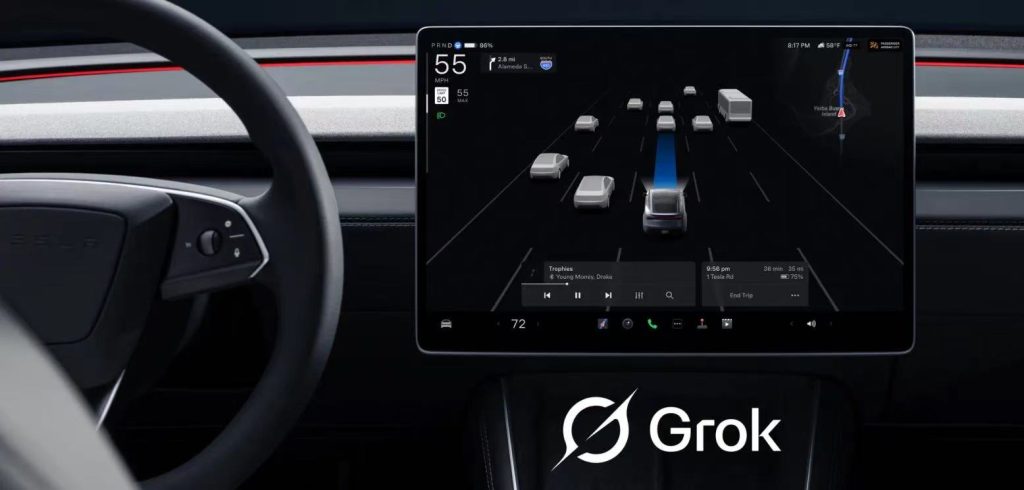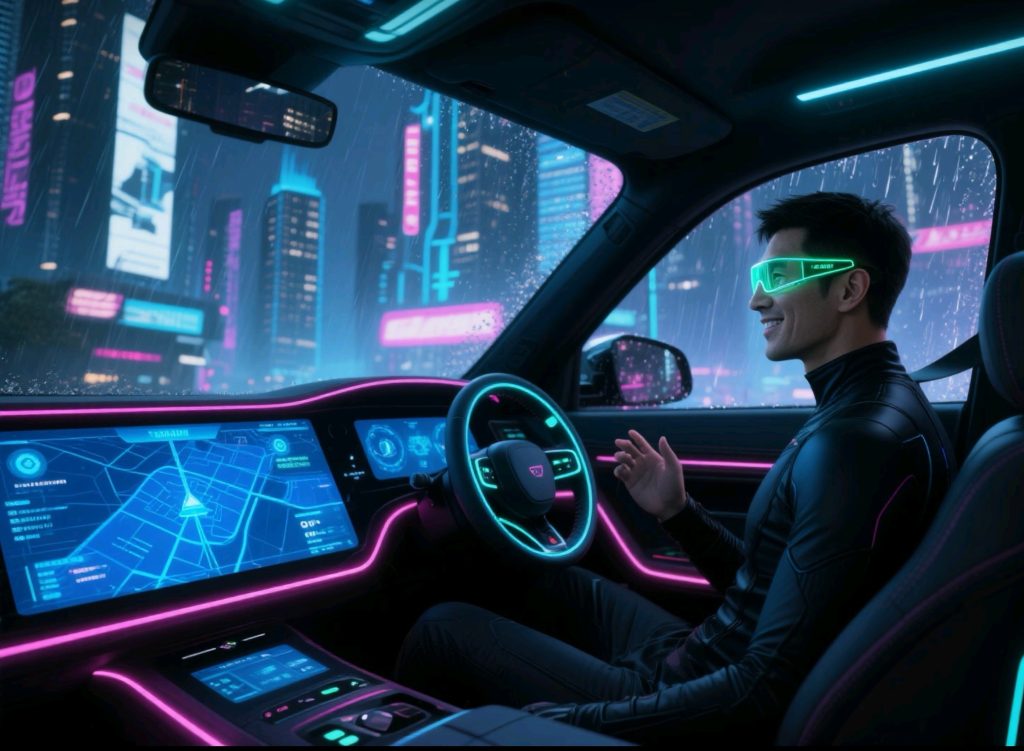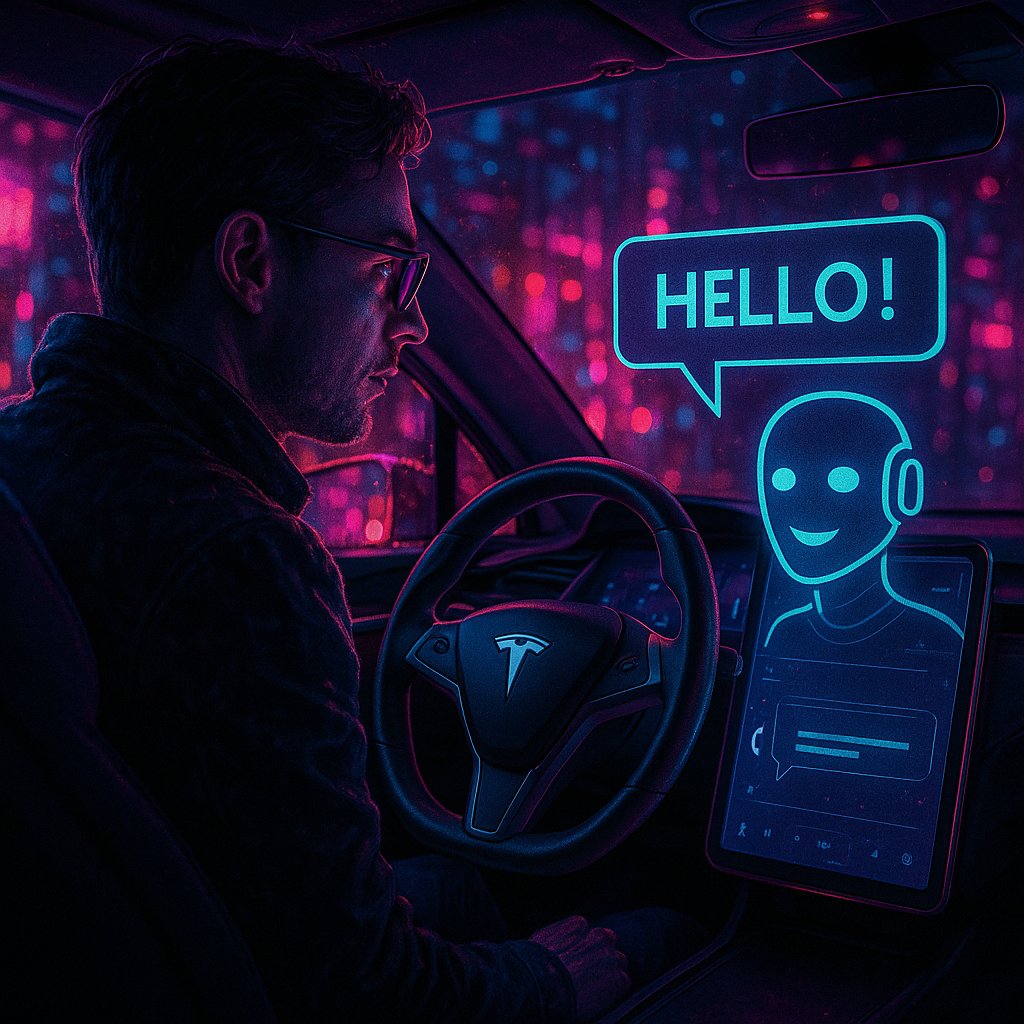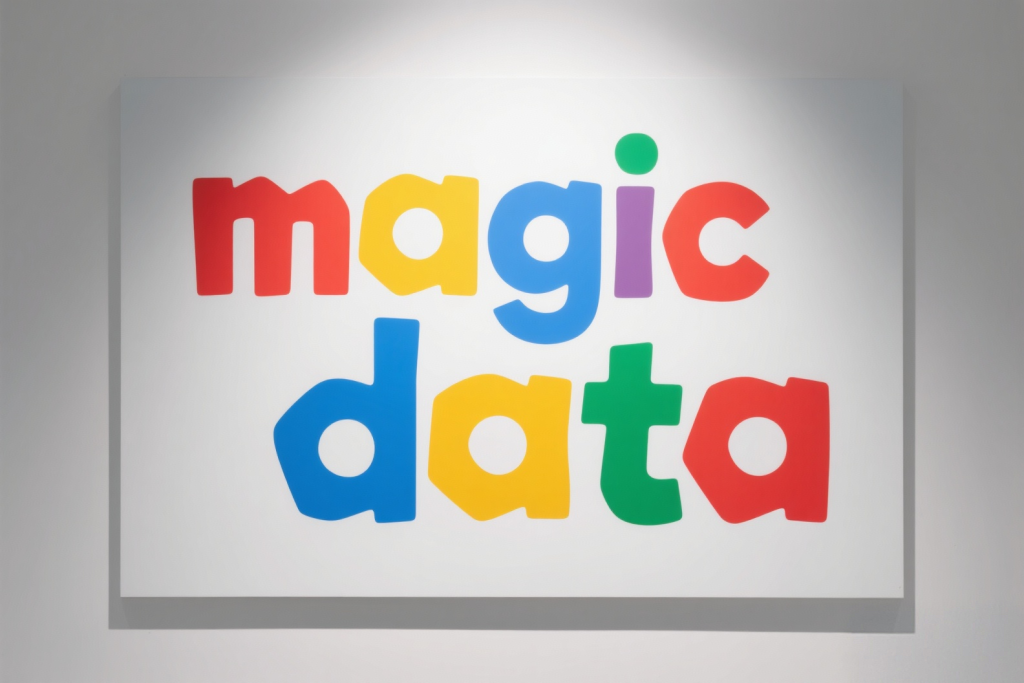1.Introduction
Kim: "Hey Grok, while I'm in a meeting, can you have the car use autonomous driving to fully charge itself?"
Grok: "Certainly. After activating full self-driving, I will immediately navigate to a nearby charging station. While you're in your meeting, I will complete autonomous parking, plug in the charger, and ensure the battery is full. Are you satisfied with this plan?"
Kim: "Absolutely."
This isn't some distant vision of future technology, but a real interaction between Tesla owner Kim and their in-car AI, Grok. Before an upcoming meeting, with just a single command, Grok can understand the user's intent, plan a charging route, select charging facilities, and autonomously execute the entire energy replenishment process. This natural language interaction model, bridging "human-car-task," imbues traditional automobiles with an intelligent soul capable of thought and execution.
"Not just autonomous driving, but also self-thinking." Grok, the large language model developed by Elon Musk's xAI team, is leveraging its outstanding language understanding and interconnected execution capabilities to propel the intelligent cockpit beyond the traditional "passive response" model. It's moving towards a new era where cars are "conversational, capable of thought, and able to act." Today, we'll dive deep into Grok's core technical features and interaction logic, exploring how it's reshaping the human-car relationship and unlocking more possibilities for future driving experiences. However, for this "self-thinking" voice interaction to truly become a reality—enabling seamless communication across different languages, accents, and situations—it absolutely relies on one crucial element: high-quality voice data.

2. Introducing Grok: From Language Intelligence to Multimodal Interaction
Grok, developed by Elon Musk’s artificial intelligence company xAI, is a multimodal general AI system. Its latest version, Grok 4, is touted by the team as "one of the most powerful AI systems available today." According to official statements from xAI, Grok exhibits near-doctoral or even beyond-doctoral capabilities in various multidisciplinary tasks, excelling particularly in mathematical reasoning, logical judgment, and factual retrieval.
During its launch event, the xAI team showcased Grok's impressive abilities, including solving complex math problems and predicting MLB World Series probabilities. They also highlighted its support for high-precision physical modeling, with future potential for realistic interactions in humanoid robots.
For voice interaction, Grok 4 utilizes Eve, a proprietary voice system developed by the xAI team. Compared to traditional voice interfaces (like current ChatGPT voice modes), Eve offers significant advantages in response speed, voice naturalness, and conversational continuity. During the live demonstration, Eve achieved near "zero-latency" voice recognition and feedback. It also displayed the ability to mimic various emotional tones based on context—from soft whispers to loud shouts, and even operatic styles—adding considerable emotion and expressiveness to human-machine conversations. Eve can now "interrupt and continue the conversation," marking a substantial leap towards truly natural voice interaction and underscoring Grok's technical prowess in multimodal perception and system integration.
These technological breakthroughs not only make human-machine voice interactions more natural but also enhance Grok's practicality and immersive experience within the smart cockpit.It's evolving from simply a command-interpreting tool behind a "voice button" into an AI driving partner that's conversational, has a distinct personality, and shows a degree of empathy.
In summary, the release of Grok 4 represents not just a significant advancement for language models but also showcases xAI's solid foundation in critical technological areas such as multimodal collaboration, voice generation, and real-time interaction. As Grok is progressively integrated into Tesla's smart cockpits, the "language–perception–execution" closed-loop ecosystem is rapidly taking shape.

3. How Grok Reshapes Smart Cockpit Voice Interaction: From Passive Commands to Proactive Intelligence
The integration of the Grok large language model into smart cockpits fundamentally transforms the traditional "question-and-answer" passive interaction. It ushers in a new era of proactive intelligence. At its core, this shift represents a leap from simple command recognition to sophisticated intent understanding, context awareness, and ultimately, autonomous decision-making and action.
3.1 Deep Contextual Understanding and Multimodal Fusion
Traditional voice assistants often process voice commands in isolation, lacking a comprehensive grasp of the in-car environment. However, Grok, leveraging its powerful multimodal fusion capabilities, can deeply integrate real-time data from in-car sensors (such as vehicle status, external environment, and driving behavior) with voice information. This provides a far more complete understanding of the driving scenario.
For instance, if a driver says, "It's a bit warm," Grok doesn't just interpret this as an intention to adjust temperature. It also considers data like external temperature, sun intensity, and air conditioning history to precisely determine whether to lower the AC, open the sunroof, or activate seat ventilation. This deep contextual understanding makes Grok's responses far more intelligent and personalized.
3.2 Continuous Conversation and Complex Task Management
Traditional voice interaction typically involves a single-turn, "one-question, one-answer" model, requiring users to constantly repeat background information. Grok's multi-turn conversational ability breaks this limitation by remembering and linking previous dialogue content, making interactions flow naturally and seamlessly.
More importantly, Grok can process and manage complex, multi-step tasks. Taking the "charging" scenario mentioned earlier as an example, Grok not only understood the "charge" command but further decomposed the task: navigating to the charging station, identifying an available charging spot, autonomously parking, and completing the charge. This capability to break down complex tasks and execute them step-by-step significantly enhances user convenience, simplifying multiple manual operations into a single natural language instruction.
3.3 Predictive and Proactive Services
Grok's "self-thinking" capability enables it to transition from passively awaiting commands to proactively offering services. By learning user driving habits, schedules, preferences, and analyzing real-time vehicle data, Grok can make predictive judgments. It can then actively provide personalized suggestions or take action even before the user explicitly requests them.
For example, if it detects traffic congestion ahead, Grok might proactively suggest an alternative route or provide information about nearby coffee shops. If a user hasn't rested for a long time, Grok could remind them about driver fatigue and recommend the nearest rest area. Based on a user's schedule, it might proactively suggest leaving earlier during peak commute times. This proactive intelligence not only boosts driving convenience and safety but also transforms the cockpit into a truly intelligent partner that understands user needs and delivers personalized services.
3.4 Emotional Interaction and Personalized Experience
Grok's voice assistant elevates voice interaction beyond mere information exchange, integrating emotional perception and expression. Eve can identify emotions in the user's voice and respond in a more natural and emotionally resonant way. For example, if a user sounds sad, Grok might play relaxing music or tell a joke to lighten the mood.
Simultaneously, Grok continuously learns the user's individual preferences, whether it's music style, navigation habits, or air conditioning temperature. It can adapt accordingly to create a truly "bespoke" driving space. This personalized and emotional interaction shifts the human-car relationship from a purely utilitarian one to a partnership, significantly enhancing user belonging and satisfaction.

4. Grok: Challenges and Future Outlook
While Grok's large language model paints an exciting picture for voice interaction in smart cockpits, its widespread adoption and full potential remain subject to several challenges. Simultaneously, we must actively anticipate its future development to build even more intelligent, safe, and personalized driving experiences.
Grok's advancement requires overcoming hurdles related to data security and privacy protection, managing high computational demands and cost control, and ensuring the model's generalization and robustness in complex real-world scenarios. Furthermore, defining responsibility and ethical considerations that accompany its "self-thinking" capabilities, alongside fostering user acceptance and new interaction habits, are also critical issues. Addressing these challenges, especially enabling the AI model to "hear" and "understand" the real world, fundamentally relies on the continuous provision and meticulous optimization of high-quality training data.
In the future, Grok will progress towards deeper multimodal interaction fusion, achieving seamless collaboration across voice, vision, touch, and even biometric recognition. Its affective computing and empathy capabilities are expected to significantly enhance, allowing the cockpit AI to become a true companion that understands and responds to human emotions. Personalization and adaptive learning will further deepen, creating highly customized driving environments for users. Concurrently, Grok will transform the car's cockpit into a super-connected terminal, seamlessly linking with external ecosystems like smart homes, office systems, and urban transportation. Naturally, the foundation for all these advancements is the continuous improvement of safety and reliability, ensuring Grok provides precise and dependable services under all circumstances. Achieving all of this hinges on spoken data derived from the real world, covering diverse scenarios and complex voice environments. This will be the indispensable cornerstone driving these advancements, empowering Grok to achieve "global listening" capabilities.
Building the Cornerstone for Next-Generation Voice Models: Multilingual High-Quality Spoken Language Speech Datasets
The successful deployment of Grok isn't just a breakthrough for the language model itself; it also heavily relies on large-scale, high-quality data from real-world scenarios. As the smart cockpit evolves towards globalized, personalized, and context-aware interactions, enabling voice recognition systems (ASR) to "understand different languages, clearly hear various accents, and accurately comprehend every individual" has become a central challenge. It is against this backdrop that Magic Data emerges, officially launching its "Multilingual High-quality Spoken Language Speech Dataset" specifically designed for training large voice models and end-to-end voice systems, aiming to provide robust "fuel" for global voice model development.
5.1 Data Value and Unique Advantages
This dataset is not a collection of traditional "scripted speech" corpora. Instead, it's the result of high-fidelity collection and meticulous annotation of natural spontaneous speech in diverse languages, from various speakers, and across multiple real-life spoken environments. Its core focus is to empower large voice models to achieve significant advancements in the following key dimensions:
- Extensive Language and Scale Coverage: The dataset covers over 30 languages, including Chinese, English, Spanish, Portuguese, French, Japanese, and Korean. Each language boasts tens of thousands of hours of rich data, fully meeting the multilingual input capabilities required for global market deployment.
- Rich Scenarios and Diverse Expressions: We have collected data with a wide range of scenario types, numerous participants, and diverse content expressions. This allows models to learn excellent generalization capabilities, enabling them to better adapt to complex and varied real-world communication environments. This deep learning of authentic contexts and subtle expressions is crucial for models to transition from "passive response" to "autonomous thinking."
- Spoken Natural Style: The dataset primarily consists of naturally spoken training data, designed to teach models the most natural communication style, eliminating stiff, robotic output.
- High-Precision Phonetic-Text Alignment: We ensure high-quality data annotation based on semantic completeness, providing a precise and error-free foundational guarantee for model training.
- High Completeness and Appropriate Punctuation: The high completeness of sentences aids the model in accurately analyzing sentence meaning, while appropriate punctuation helps the model learn natural human pauses and prosodic features, leading to smoother and more natural voice interaction.
Multilingual Spoken Speech Dataset Details:
- Chinese:https://www.magicdatatech.cn/datasets/asr/mdt-ri001-chinese-spoken-speech-dataset-1752807069
- Cantonese:https://www.magicdatatech.cn/datasets/asr/mdt-ri002-cantonese-spoken-speech-dataset-1752818933
- English:https://www.magicdatatech.cn/datasets/asr/mdt-ri003-english-spoken-speech-dataset-1752809700
- Japanese:https://www.magicdatatech.cn/datasets/asr/mdt-rj001-japanese-spoken-speech-dataset-1752809833
- Korean:https://www.magicdatatech.cn/datasets/asr/mdt-rj003-korean-spoken-speech-dataset-1752818478
- Spanish:https://www.magicdatatech.cn/datasets/asr/mdt-rj009-spanish-spoken-speech-dataset-1752818762
For more info, please contact: business@magicdatatech.com
5.2 Full-Link Optimization of Large Voice Model Performance
This dataset not only significantly improves ASR system performance in "understanding human speech" but also increasingly optimizes the entire semantic chain of large voice models:
- Language Understanding Layer: By deeply modeling context, emotion, and logical structures within real speech, the model can more accurately identify user intent, forming stronger "speech + semantic" coupled expressions.
- Speech Generation Layer: Training on authentic natural spoken data helps Text-to-Speech (TTS) models generate speech that is more human-like in terms of speed, rhythm, and intonation, making Grok sound less "robotic" and more like a true "partner." By learning the voice characteristics of different speakers, the model can generate more personalized voice responses based on user identity and preferences, meeting diverse user needs.
- Interaction Adaptation Layer: The dataset fully preserves common real-world spontaneous phenomena such as interruptions, rephrasing, and hesitations. This significantly enhances the voice model's adaptability to complex scenarios, especially its stable response performance during real-time, multi-turn conversations within the smart cockpit.
5.3 Building a "Global Hearing System" for Smart Cockpits
In future smart car cockpits, AI assistants will need to do more than just understand standard Mandarin or American English. They'll also need to accurately recognize a Sichuan accent, comprehend Indian English, and even process a command issued in English by a Japanese driver using a French in-car system. This is precisely the core value of the dataset provided by Magic Data—using a single dataset to train a "globally applicable ear" for the smart cockpit.
As cutting-edge AI assistants like Grok enter global markets, the demand for cross-lingual, cross-cultural, and highly realistic voice data will become unprecedentedly urgent. The high-quality, diverse, and large-scale voice data provided by Magic Data is indeed the "essential fuel" for developing next-generation intelligent voice systems, capable of significantly enhancing the smart cockpit voice interaction system's understanding, responsiveness, and inclusivity.

Conclusion
The new era of intelligent driving led by Grok—one that is "conversational, thinking, and actionable"—requires a solid perceptual foundation. Voice recognition is undoubtedly the starting point for all human-vehicle dialogue. The "Multilingual High-quality Spoken Language Speech Dataset" launched by Magic Data is precisely the underlying infrastructure supporting this voice AI revolution. It will not only make Grok smarter and more human-aware but will also enable all users—regardless of their language background—to truly experience the future of mobility where "the car understands with just a word."

